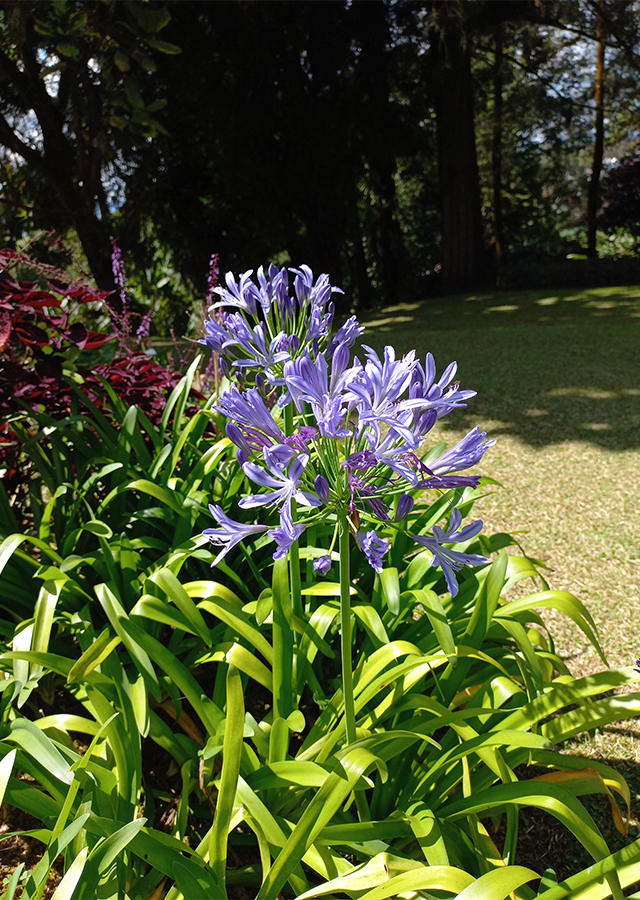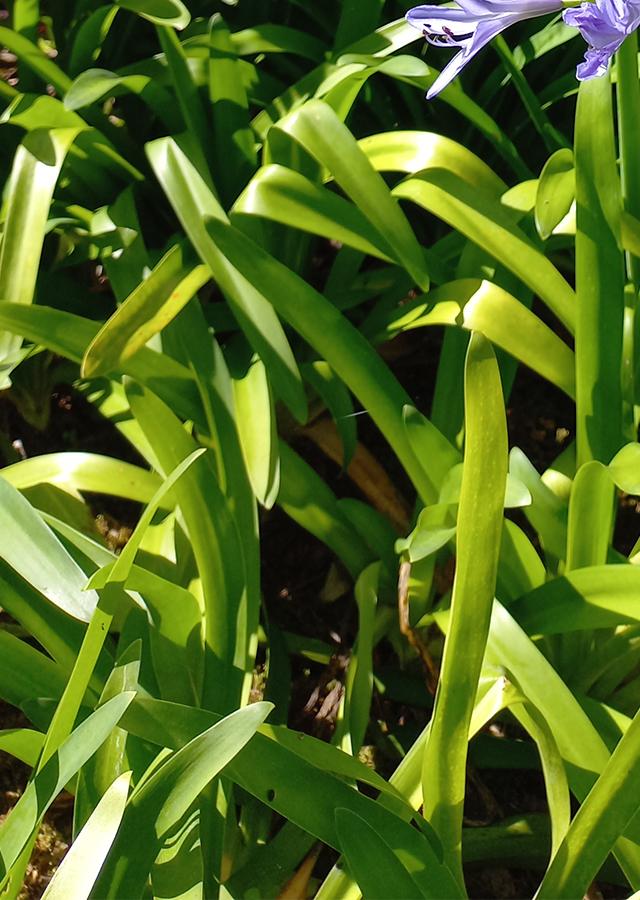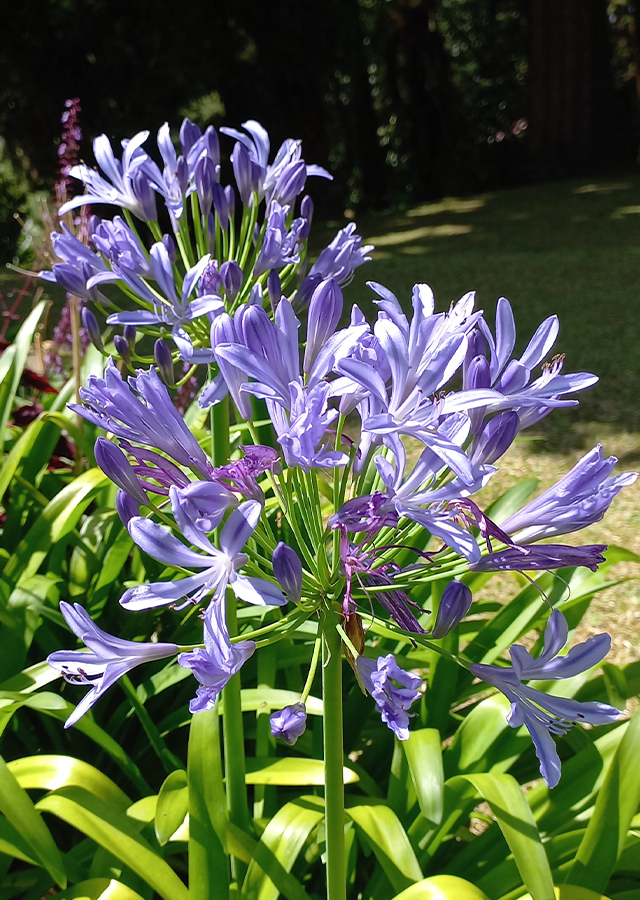African Lily
Agapanthus africanus (L.) Hoffmanns.
Amaryllidaceae
Location in our garden
Principal



Synonym
Abumon africanum (L.) Britton
Agapanthus medius Lodd. ex Steud.
Agapanthus minor G.Lodd.
Habitus
Shrubs. An evergreen perennial plant, producing a rosette of leaves about 1 m high from an underground bulb
Part Used
Leaves
Roots
Growing Requirements
Full Sunshine
Need Shade
Habitat
Forest
Mountains
Rocky Areas
Terrestrial
Overview
Aganthus africanus comes from South Africa and spreads from the Cape Peninsula to Swellendam. This name is translated from the word Agapanthus which comes from the Greek, namely Agape, which means love and Anthos means flower. Therefore it is often called the flower of love. This plant is widely used in gardening for garden decoration considering the beauty of its striking blue-purple flowers. Usually used in pots or as plants along walls or fences. The shape of the flowers also makes it possible to cut them into conventional bouquets and dried bouquets. The plant is sometimes gathered from the wild for local medicinal use.
Vernacular Names
Agapanto (Spanish), Ubani (Zulu).
Agroecology
Found growing at rocky sandstone slopes, usually in montane regions, in areas of winter rainfall. Succeed in most soils, but prefers a light very well-drained porous soil with plenty of leaf-mold. Plants need to be kept moderately dry during the growing season but with some moisture in winter. They only flower freely if growing in a very sunny position. Plants succeed in maritime gardens. The rhizomes are best planted only just below soil level - a mulch of gravel or stone chips will help to keep the crown of the plant free from excess moisture.
Morphology
- Roots - thick gnarled.
- Stems - sturdy, carrying a long and narrow tuft of leaves.
- Leaves - basal, 2-rank, linear-lanceolate, up to 50 cm long and 2-4cm wide. The plant is distichous: the leaves grow in rows opposite each other.
- Flowers - flower stalks erect, reaching 30 to 50 cm in height. The flowers are umbels, 12 to 30 inflorescences, usually bright blue-purple, clustered at the ends of the stalks.
- Fruits - capsule and contains the seeds.
Cultivation
Propagated by seeds - best sown as soon as it is ripe. The seed usually germinates in 1 - 3 months at 18 °C. Do not sow it too thickly so that it is possible to grow the seedlings on in their pot without disturbing them for their first year of growth. Give occasional liquid feeds to make sure they do not become nutrient deficient. Divide the seedlings up into individual pots about 12 months after germination, grow them on for a further year and then plant them out into their permanent positions. Seedlings take 2 - 3 years to flower.
Chemical Constituents
Saponins and sapogenins of the furostane and spirostane types, including agapanthegenin and steroidal spirostan sapogenins, anthyocyanins, chalcone compounds, Isoliquiritigenin, two new steroidal saponins, (25R)-5α-spirost-7-ene-2-α,3β,5α-triol 3 -O-[-α-L-rhamnopyranosyl-(1 → 2 )]-β-d-glucopyranoside 1 and (25R)-5α-spirost-7-ene-2α,3β,5α, 9a-tetrol-3-O -β-D-glucopyranoside.
Traditional Medicinal Uses
- Used by South African traditional healers as phytomedicine to treat ailments related to pregnancy and to facilitate labor.
- Orally or rectally, as a decoction, to ensure an easy delivery and a healthy child. It may facilitate expulsion of the placenta and augment uterine contractions.
- Roots worn as necklace for easy childbirth and fertility.
- Decoction used in washing newborn babies; also, an infant tonic.
- Considered an aphrodisiac, used for impotency and barrenness.
- Leaves used around wrists to bring down fever.
Part Used
Reference Sources
- Royal Botanic Gardens. 2021. Plants of the World Online: Agapanthus africanus (L.) Hoffmanns. https://powo.science.kew.org/taxon/urn:lsid:ipni.org:names:527258-1#synonyms. 16-04-22.
- Stuartxchange. 2019. Phillipine Medicinal Plants: African lily. http://www.stuartxchange.org/AfricanLily. 16-04-22.
- Useful Tropical Plants Database. 2022. Agapanthus africanus. https://tropical.theferns.info/viewtropical.php?id=Agapanthus+africanus. 16-04-22.


